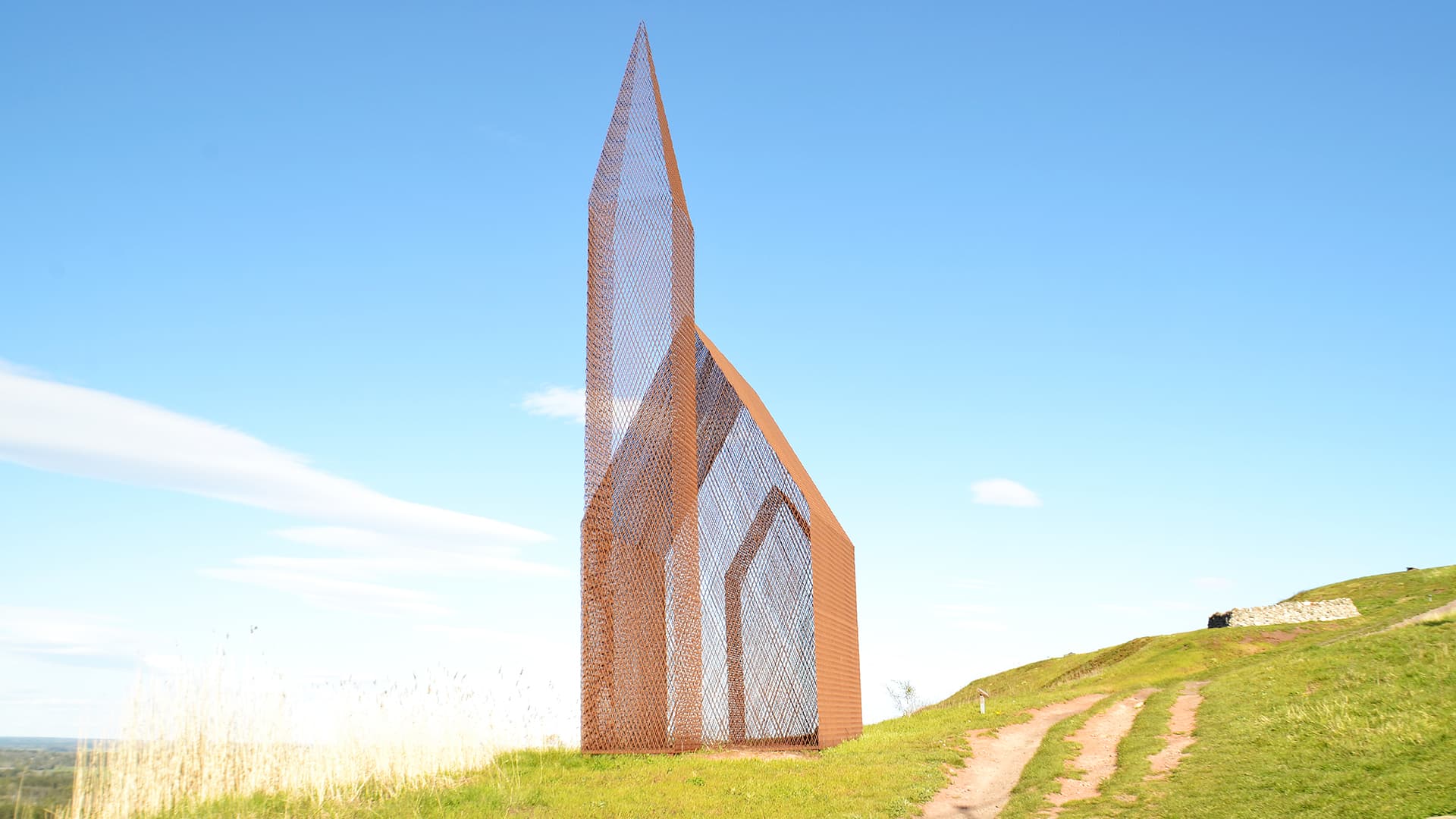4. Absit Omen
ARTIST: Kent Karlsson (2003)
TECHNIQUE: Welded stretch metal

The art work called Absit Omen is placed on one of the highest ridges of the mount. When Sweden was christened the first churches were built on hills, which often had been heathen cult places. One of the reasons for building on hills was that the church bells then could more effectively reach out – the sound signified church services, warnings of war or other signals. It was also a way of making the church building visible and to experience it as larger than it was.
Kent Karlsson has here made an interpretation of the old Swedish way of life. As you can see the art work is the contour of a classic Swedish church building with medieval measures. How the sculpture is perceived depends on where the viewer is. Walk around it, view it from a distance to check it out.
The idiom is strong – something that looks like a church has “grown up” and become yet another silhouette on the mount. Kent Karlsson´s idea is if you take a well-known shape and place it in an unexpected place then something happens. Absit Omen therefore gives the impression of lightness and airiness. Its title Absit Omen is Latin and means according to the artist himself “may this not be a bad omen.”
The church is no longer the natural meeting-place that it once was. Both its power and wealth have decreased. Karlsson´s work of art embellishes the mount as a monument of how Sweden became Sweden. During the time period that Karlsson refers to the country´s inhabitants had a natural meeting-place. This was not entirely unproblematic, but society today lacks that type of unifying factor. Instead we have become more individualized, each man to himself. Who are we without a context? This is one of the questions that the work in front of you might evoke.
This sculpture was made of welded stretch metal. It is a mass-produced material that has a low artistic status compared to bronze or marble for instance. Earlier it was said that the work changes form. That is thanks to its material. The sculpture changes its density depending on where you are. It also changes along with the weather. On a cloudy day, when the light is still strong it might seem as if it is dissolved against the sky. Then the work changes its meaning – perhaps its spiritual aspects appear or else it means that the church has lost its significance.
Karlsson has also created other church-like sculptures, such as The Temple of Doubt and Hope in Gothenburg and Mirage at Vännnäs.
Kent Karlsson was born in 1945 in Gothenburg. He is a Swedish sculptor and painter educated at The School of Art Industry in Gothenburg and The Royal Collage of Fine Arts in Stockholm. He has also been a professor of painting at the Valand School of Art where he was also trained as an artist. He has been professor at the University of Gothenburg as well as visiting professor at Tokai University in Japan.
Sidinformation
- Senast uppdaterad:
- 20 september 2023
- Sidan publicerad av:
- Piia Edh
